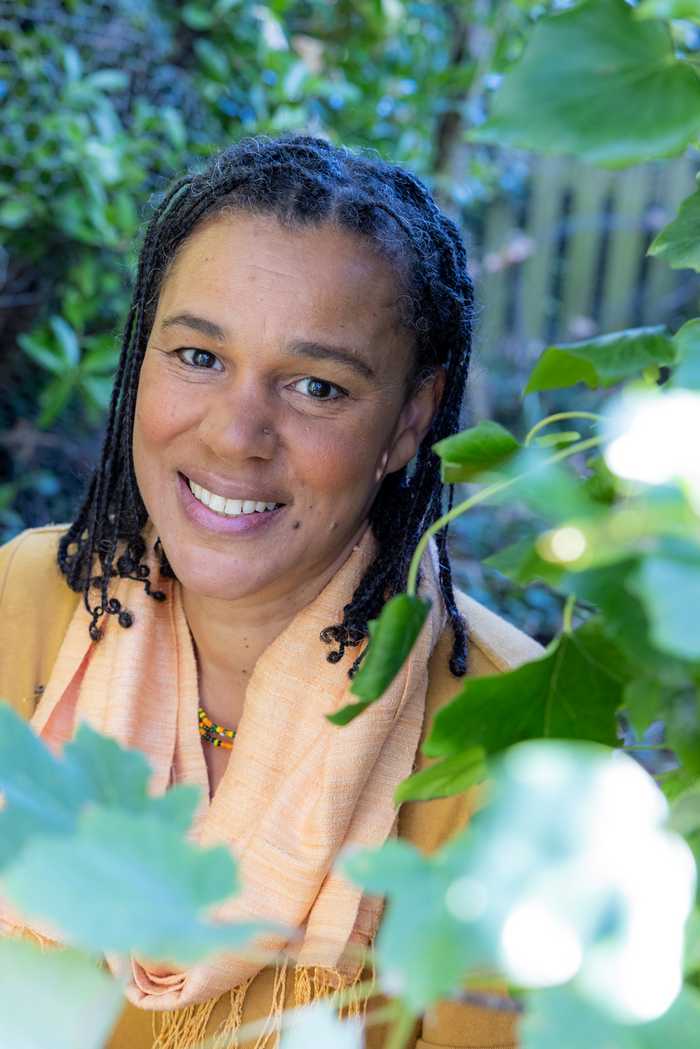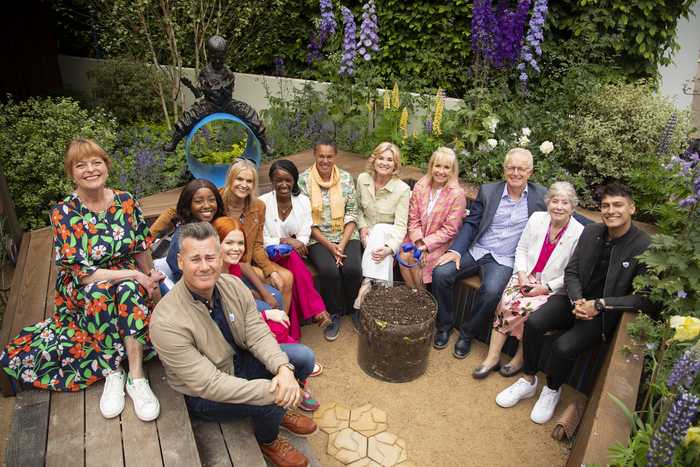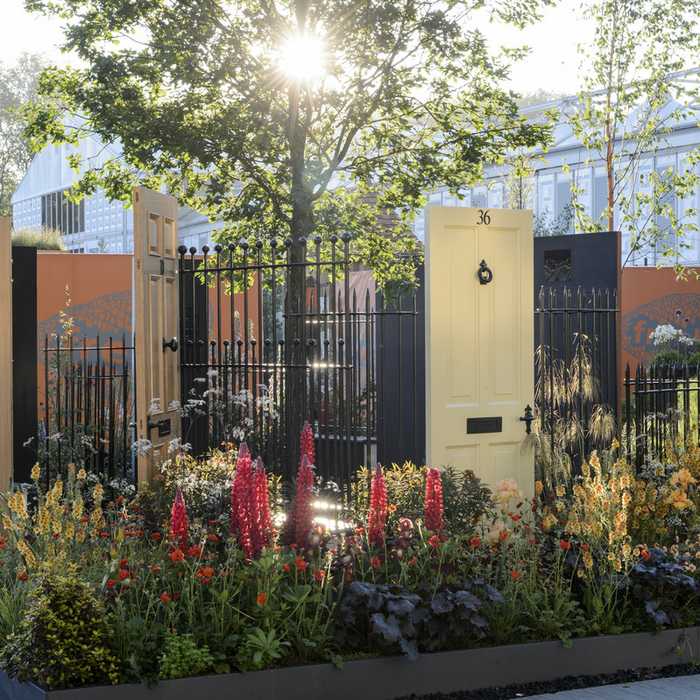Have a seat with...
Juliet Sargeant
Juliet Sargeant is an RHS Chelsea Flower Show Gold Medalist and People's Choice Award Winner. Away from her successful garden design career, Juliet is a much-loved presenter on the BBC flagship series Gardeners' World and founder of the Sussex Garden School.
In today's Have a Seat With, we chat about being back at Chelsea in the summer and working on the Blue Peter garden that featured at the show this year, Juliet's previous career in medicine, and her unique approach to garden design and landscape. It's a fascinating read!

Hello Juliet, thanks for speaking with us today! First thing’s first, how was RHS Chelsea Flower Show last summer? Did things feel a little more back to normal after 2021’s autumn show and the virtual event the year before?
It was great to be back at Chelsea! Although I go every year, usually to film for Gardeners World, it was 7 years since I last exhibited a garden. I went in September 2021 which was really interesting – lovely to see a different palette of late summer plants being used. However, everything returning to normal this May made for a great vibe around the showground and a great sense of relief for everyone.
Do you have any particular highlights from the show?
I was really delighted to see Cityscape’s garden for St. Mungo’s. It was made from recycled materials, but not so you would know it.
I grow increasingly conscious of the amount of waste in our industry. You would imagine that making gardens can be nothing but good, because we are planting all the time. However, there is a destructive side to what we do. We start by disturbing the soil and often compacting it, so it can take years to recover. Then we bring in plants and materials from far-flung regions, which involves long-distance haulage. And the materials themselves, such as steel and concrete have a high carbon footprint. It is true that much of this is offset by the number of plants, especially trees that we plant, but growing those plants involves heat, fertilisers, plastic and yes, even peat.
The horticulture industry has a long way to go to clean up its act. We need better systems and processes and we also need innovative building materials. I am constantly on the search for something better than concrete and steel, but there are reasons why those materials have been used for so long. Cityscape’s garden was an inspiring reminder that recycling doesn’t have to look like a pile of old car tyres and carpet remnants! It was a very colourful, chic and atmospheric garden. Hats off to them!
Sticking with Chelsea, can you tell me a little bit about your work on ‘The New Blue Peter Garden: Discover Soil’ which displayed at the show. How did it feel to be involved in designing such an iconic garden?
In 2021, I received a phone call inviting me to design a new garden for Blue Peter. At first, I thought, it was a hoax, but gradually it dawned on me that this was a real, once-in-a-lifetime opportunity. The last person to do this was Percy Thrower in 1974!
I wanted to create a garden that is relevant to kids today and more so than something about the environment. Children know about climate change and carbon, but no-one really talks about the silent environmental crisis of soil erosion, not even gardeners. So, the garden is an invitation to think more about soil: how it forms; how important it is and how easily it can be destroyed. One might imagine that soil is a bit of a dry subject, so I used art, colour and creativity to bring the subject to life and engage children’s imaginations.
In the centre of the garden, we had a large orange building called The Rhizotron. It has a planted roof and a narrow set of steps takes you down, through the low doorway into the inner chamber. The walls are wattle-and-daub and the floor is compacted soil. So, as you bend to go inside, the temperature drops and you can smell the earthiness. The sounds are muffled – you are underground and in the soil. Rather like ‘Voyage to the Centre of the Earth’, I want people to imagine what it is like to be a soil organism, so playing on the wall of the Rhizotron chamber, we have an abstract art video, depicting a journey through soil.
I speak in the present tense, because the garden is now being relocated to the RHS Garden Bridgewater, so in March 2023 visitors can go and see for themselves. Kids who have a Blue Peter badge will get in free.
What does a normal working day look like for you, or does no so such thing exist; and how do easy do you find it to switch between your garden design and broadcasting hats?
That’s the thing I love about being a garden designer, is that no two days are alike and every project is different. Sometimes, when I’m tired, I think wouldn’t it be nice to do the same thing every day and not be constantly challenged to solve yet another new problem, but not really. I love what I do.
So, part of my work is studio-based and the rest out-and-about. I often have to go to site, outsourcing materials or to a plant nursery. So, I try to cluster into studio days, client days and travelling days. Like most people now, I generally start with emails and messages and then catch up with the rest of the team. I work with two other designers in my office and we have a planting team who go to finish the gardens after they have been built.
I think people would be surprised how much time I spend on logistics, pricing, sourcing and generally organising; it’s certainly not all ‘arty’ creativity. The concept and shape of a new garden comes to me quite quickly and then the rest of the project is all about getting what is in my mind, either on to paper or onto the ground.

"I wanted to create a garden that is relevant to kids today and more so than something about the environment. Children know about climate change and carbon, but no-one really talks about the silent environmental crisis of soil erosion, not even gardeners."
Can you tell me a little bit about your route into the world of horticulture? How did you go from a successful career in medicine to an award-winning garden designer?
As a child I spent a great deal of time playing outdoors and, like a lot of garden-makers, I can trace my interest to those early experiences of adventure and imaginative play. However, working in horticulture was never an option for me; it was always going to be medicine, law, or teaching. Because I chose medicine, I had to drop all the creative subjects at school, so I could concentrate on sciences and I remember being very fed-up about that at the time.
After a few years working as a hospital doctor, I wanted something more creative, so did a degree in garden design at Middlesex university. Although that was nearly 30 years ago, my medical training definitely still informs my design practice. For me it is all about how a garden makes a person feel; my objective is to create spaces that help people to relax, de-stress and reconnect with the positive things in life. And I love it that there is now a good body of scientific evidence outlining the beneficial effects of gardens and landscape.
Our awards have been for some of the more experimental work that we’ve done and I love it that our industry, albeit quite a conservative one, is open to new ideas and different ways of approaching things. It encourages me to think outside the box and have fun with innovation; it keeps one’s creative juices flowing!
After winning the People’s Choice Award at the 2016 Chelsea Flower Show, for your quite brilliant Modern Slavery garden, you called for more diversity in horticulture. Since your win, do you think there’s been a positive shift in the industry?
There’s certainly been a lot more open discussion about the problem of the narrow representation of people in horticulture. I know of several individuals who are committed to trying to make a difference in their own, small way. I think the greater challenge is creating institutional change; making age-old routes and processes more inclusive, welcoming, supportive and also adaptive. People can get defensive when asked to re-look at the way they have done things for years.
What are your memories of the 2016 win? It must’ve been a hugely proud moment.
My main memory is of the great team that created The Modern Slavery Garden. I was supported on all sides by a group of people committed to raising awareness of the global issue of modern slavery. Yes, I was tremendously proud to be asked to join their campaign. They had been working on the issue for several years; Chelsea was just the icing on the cake!

"My objective is to create spaces that help people to relax, de-stress and reconnect with the positive things in life."
With such a hectic working life, what do you like to do in your downtime? How do you like to relax?
I live in Sussex, which is a lovely spot for walking, which I love to do…best followed by a hearty pub lunch!
I also love craft and painting. That’s what led me to set up The Sussex Garden School – the wonderful inspiration that I draw from just a simple walk in the countryside. The idea of the school is to create an opportunity for people to enjoy a day making, doing and designing……all inspired by a lovely Sussex, garden venue. We run design, planting, gardening and also craft courses and I am hoping to expand that to writing, painting, pottery; anything really, that is ‘garden-inspired’. Just lovely, treat-full days of creativity.
What is your ethos towards garden design? Do you have any Golden Rules, or do you have to be flexible from project to project?
My ethos is that the garden is not about me, but designed to reflect the personality and interests of my client. I want to help them to connect with Nature, through their own garden space….and in that way may a positive contribution to their well-being. So, because it's all about their relationship to the landscape, the process of actually bringing the garden about is really important.
My heart sinks when I hear tales of the nightmares that people have had, (usually with building projects, I have to say); planning sagas, poor communication, dodgy workmanship, months of delay. So, we try to make the whole experience a pleasant and creative journey for the client….make it really fun and exciting to have your garden designed.
What’s your favourite garden in the world?
My favourite garden is that garden of my childhood imagination that I spoke of; part reality, but mostly fantasy. That’s the garden that inspires my work; what I’m really trying to do, is recreate for my clients the sense of freedom, joy, fun, creative possibility…and awe, that a child feels when first encountering the natural world.
What’s next on the horizon for you, Juliet?
Some of our most rewarding projects have been in collaboration with other creative people, artists, sculptors, and community groups. We have a couple of such projects at the moment, and I would certainly like to do more of this.
A few years ago, I was asked by Tate Britain to submit a design for a pop-up garden. The most exciting thing about this invitation was that myself and another garden design company were being asked to submit work for one of our national galleries, alongside fine artists. It felt like a real recognition from the ‘gate-keepers‘ of the art world, that garden design can be an expressive art form.
The commission went to one of the established artists, but I remain undaunted, I think that increasingly there will be exciting opportunities for garden designers to show their work in the realm of ‘art’.
Thank you, Juliet! It's been a pleasure.
Photo credits: Matthew J. Thomas
The Sitting Spiritually 'Have a Seat With' series takes a look behind the scenes at how we switch off from the bustling modern-day lifestyle. We speak to people of all sorts of backgrounds and lifestyles around the country as we seek to explore the different ways of relaxing and just taking a moment.
Posted on February 16th 2023
